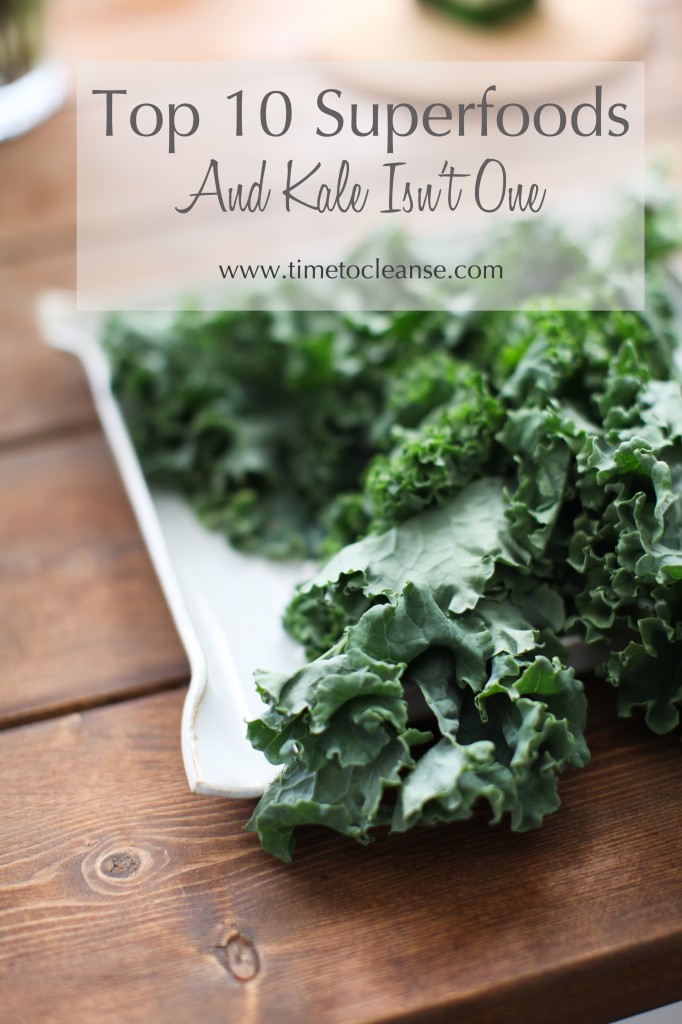 By now, you probably know that green vegetables are an important part of a healthy diet. But how do you know which ones are best for you? You’ve probably heard that kale is a superfood. It contains healthy minerals, vitamins and antioxidants and can help you lose weight, control your blood sugar, lower your cholesterol and reduce your risk of heart disease. Like many health conscious people, you may already be including kale in your diet.
By now, you probably know that green vegetables are an important part of a healthy diet. But how do you know which ones are best for you? You’ve probably heard that kale is a superfood. It contains healthy minerals, vitamins and antioxidants and can help you lose weight, control your blood sugar, lower your cholesterol and reduce your risk of heart disease. Like many health conscious people, you may already be including kale in your diet.
Even kale can become boring, however, and you might be looking for a substitute. Guess what? Some vegetables are even more nutritious than kale. New research performed for the Centers of Disease Control shows that there are vegetables containing even more of the nutrients the Food and Agriculture Organization of the United Nations and the Institute of Medicine consider important for public health: protein, fiber, potassium, protein, calcium, iron, thiamin, riboflavin, niacin, folate, zinc, and vitamins A, B6, B12, C, D, E, and K.
Take a look at Isagenix Greens, an easy way to include superfoods in your diet & meet your daily requirements of many important vitamins and minerals.
Quiz: Is Your Body TOXIC? Take the Test...
(get your free personalized report)
Here are the top 10:
10 Superfoods with Even More Nutrients than Kale
1. Watercress
The healing properties of watercress have been known since ancient times. Hippocrates mentioned it as a way of treating wounds. Watercress kills bacteria and contains compounds called glucosinolates, which may prevent cancer.
Watercress is rich in antioxidants, including flavonoids. It has very high levels of vitamins K and C and is a good source of calcium.
2. Chinese cabbage
Quiz: Is Your Body TOXIC? Take the Test...
(personalized report)
There are two types of Chinese cabbage: napa cabbage and bok choy. Both have high levels of vitamin C. They also contain glucosinolates.
Chinese cabbage is delicious in stir fries. Cook it in olive oil for added health benefits.
3. Chard
Chard is very rich in vitamins K, A, C and E. It’s a good source of magnesium. Chard contains syringic acid, a flavonoid that inhibits the activity of alpha glucosidase, which is an enzyme that breaks down carbohydrates. This means that chard can help regulate blood sugar levels.
4. Beet greens
When you buy fresh beets, do you tear off the leaves and throw them away? If you do, you’re making a mistake. Beet greens are very good for you. They contain high levels of iron and vitamins A, C and K as well as antioxidants.
You can try adding beet greens to your favorite smoothie recipe.
5. Spinach
When you were growing up, did your mother tell you to eat your spinach because it was full of iron? Your mother probably didn’t know that spinach contains fat-like substances called glycoglycerolipids that might help stop tumor growth. Neoxanthin, an antioxidant found in spinach, could help prevent the spread of prostate cancer. Spinach has very high levels of vitamin K and is rich in manganese, magnesium, folate, vitamin A and vitamin C.
6. Chicory
Chicory is another leafy green vegetable that has been used medicinally since ancient times. Pliny recommended chicory as a treatment for stomach problems. Today, we know that chicory contains high levels of inulin, an indigestible carbohydrate that the beneficial microbes in your digestive system use for energy. When you eat foods containing inulin, you support the growth of healthy gut bacteria.
Research shows that inulin can lower cholesterol levels.
You can use chicory to make caffeine-free coffee.
7. Lettuce
Darker lettuces are good sources of iron, calcium, copper, potassium, folate and vitamins K, A, C and E.
When preparing salads, avoid light-colored lettuces such as iceberg lettuce. These are lacking in nutrients.
For a change, try juicing your lettuce and drinking it instead of eating it.
8. Parsley
Parsley is another great source of vitamins K, C, A and folate. It‘s rich in antioxidants.
Research suggests that parsley essential oil might prevent unhealthy immune responses.
9. Collard greens
Like other leafy green vegetables, collard greens are a good source of antioxidants and glucosinolates. They are very rich in vitamin K and vitamin A.
10. Turnip greens
As with beets, you’re probably used to eating the roots of turnips, not the leaves. In fact, turnip greens are very healthy. They’re high in antioxidants, folate and vitamins K, A and C.
You can serve turnip greens boiled or steamed.
Additional Sources:
Antibacterial activity of extracts of twelve common medicinal plants from the Philippines, Journal of Medicinal Plants Research
Ancient Herbs, Marina Heilmeyer
Antidiabetic Medicinal Plants as a Source of Alpha Glucosidase Inhibitors, Current Diabetes Reviews
Greek Medicine from Hippocrates to Galen: Selected Papers, Jacques Jouanna
